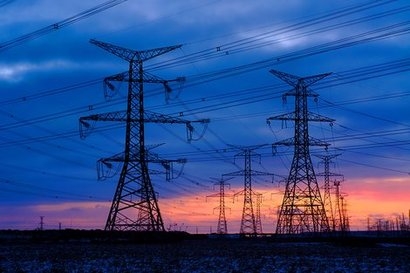
The modern global economy is driven forward by a global energy trade in which countries around the world are dependent on the flows of oil, coal, and natural gas to keep their economies growing. However, as countries move to decarbonise and adopt renewable energy, many are finding it difficult to do so cost-effectively because of fundamental limitations in solar and wind resources.
For these countries to fully decarbonise without breaking the bank, they must develop innovative renewable energy carriers and build new zero-carbon energy supply chains. In the new report, Evolution of Energy Networks: Decarbonising the Global Energy Trade, Lux Research examines these renewable energy carriers and the countries and companies developing them.
“Places like Singapore, Japan, and the Netherlands are great examples of countries that cannot meet their energy demands solely through domestic renewable sources like wind and solar energy” said Tim Grejtak, an analyst at Lux Research and the lead author of the report. “In fact, countries representing $9 trillion of global GDP cannot meet their energy demands solely through domestic renewable energy production and will require the import of renewable energy from more resource-rich countries. Our analysis shows the expanded buildout of AC and DC powerlines will be the most cost-effective way of importing low-cost solar energy from distant regions, though only up to roughly 1,000 km. At farther distances, other renewable energy carriers like synthetic fuels are less expensive. It’s important to note that imported energy costs can be competitive against other zero-carbon technologies, but no current energy carrier can offer costs low enough to completely replace liquid natural gas (LNG) or oil”.
In the new report, Lux evaluated the lifetime costs of 15 different renewable energy carriers ranging from conventional carriers like electricity, hydrogen, synthetic methane, and ammonia to more advanced energy carrier concepts like liquid organic hydrogen carriers (LOHCs), vanadium, and aluminum. Delivering energy via land-based infrastructure like powerlines or pipelines becomes expensive at long distances due to the inefficiencies of powerlines and capital costs of pipelines. Delivery via ship, on the other hand, is much more cost-effective at long distances, whether it be LOHC delivered by tanker or liquid hydrogen delivered by cryogenic carrier like LNG.
Crucially, Lux’s analysis found that across all renewable energy carriers, low-cost solar energy can be delivered to resource-constrained regions at 50 percent to 80 percent lower cost than generating that solar energy locally under less favourable conditions. This value proposition will motivate the build-out of billions of dollars of new infrastructure in countries committed to reducing their carbon intensity.
Lux predicts the first tipping point for deploying renewable energy import infrastructure will be in 2030, when imported electricity via new HVDC power lines becomes cheaper than low-carbon natural gas turbines. The next tipping point will occur in 2040, when imported liquid hydrogen becomes cheaper than low-carbon steam methane reformation. This gives companies today just 10 years to develop the partnerships and pilot projects necessary to demonstrate such a transformative energy paradigm. Major companies like Kawasaki Heavy Industries, Mitsui & Co., Equinor, and Shell are already developing their own decarbonized energy trade routes in Europe, Japan, and Southeast Asia, meaning the fight for $500 billion worth of energy imports in those regions is just beginning.
For additional information:
Evolution of Energy Networks: Decarbonising the Global Energy Trade

